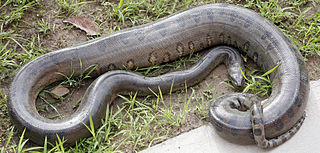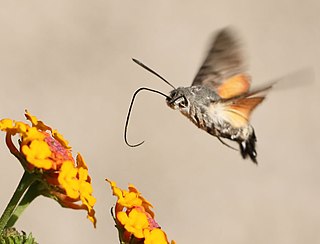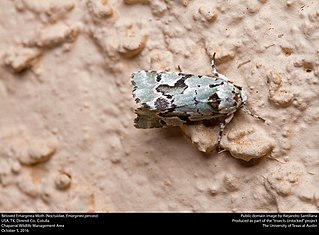
Anacondas or water boas are a group of large snakes of the genus Eunectes. They are found in tropical South America. Four species are currently recognized.

Carpenter bees are species in the genus Xylocopa of the subfamily Xylocopinae. The genus includes some 500 bees in 31 subgenera. The common name "carpenter bee" derives from their nesting behavior; nearly all species burrow into hard plant material such as dead wood or bamboo. The main exceptions are species in the subgenus Proxylocopa; they dig nesting tunnels in suitable soil.

Agrotis is a genus of moths of the family Noctuidae. The genus was erected by Ferdinand Ochsenheimer in 1816. A number of the species of this genus are extinct.
Pristimantis lythrodes is a species of frog in the family Craugastoridae. Its common name is Lescure's robber frog. It is found in northern Peru and southern Colombia, near the Peruvian border. Its natural habitats are tropical moist lowland forests and swamps.

Candalides is a large genus of butterflies in the family Lycaenidae. The species of this genus are found in the Australasian ecozone.
Hypotrix is a genus of moths of the family Noctuidae.
Ponometia is a genus of moths of the family Noctuidae.
Sympistis is a genus of moths of the family Noctuidae.

Sphinx is a genus of moths in the family Sphingidae. The genus was erected by Carl Linnaeus in his 1758 10th edition of Systema Naturae.

Ambulycini is a tribe of moths of the family Sphingidae first described by Arthur Gardiner Butler in 1876.

Smerinthini is a tribe of moths of the family Sphingidae. The genus was erected by Augustus Radcliffe Grote and Herbert C. Robinson in 1865.

Macroglossini is a tribe of moths of the family Sphingidae described by Thaddeus William Harris in 1839.

The Echinothuriidae are a family of sea urchins in the order Echinothurioida. Due to their soft skeletons, most are called "leather urchins", but species in the genus Asthenosoma are also known as "fire urchins" due to their bright colors and painful, venomous sting.
Gigaductus is a genus of parasites in the phylum Apicomplexa.

Microdrillia is a genus of very small sea snails, marine gastropod mollusks in the family Borsoniidae.

Psaphidini is a tribe of owlet moths in the family Noctuidae. There are at least 40 genera and at least 90 described species in Psaphidini.

Geophagus is a tribe of cichlids from the subfamily Cichlinae, the American cichlids. It is the sister taxon to the clade which includes the Cichlasomatini and Heroini. Fishes in the Geophagini are distributed from Panama south to Argentina, it is the most speciose of the seven tribes within the Cichlinae and it is subdivided into three sub-tribes, Acarichthyina, Crenicaratina, and Geophagina which together contain over 200 species. Geophagines show morphological and behavioural specialisations to enable them to sift the substrates within their mouths so that they can separate benthic invertebrates from substrates dominated by sand or silt.













